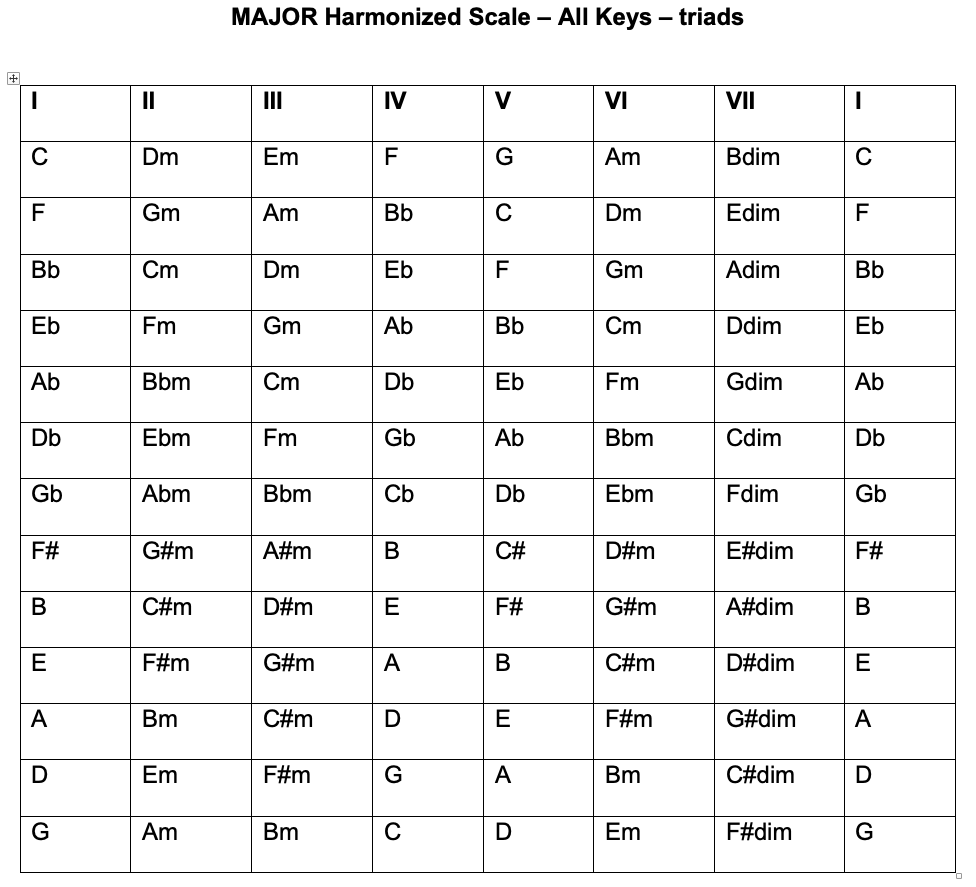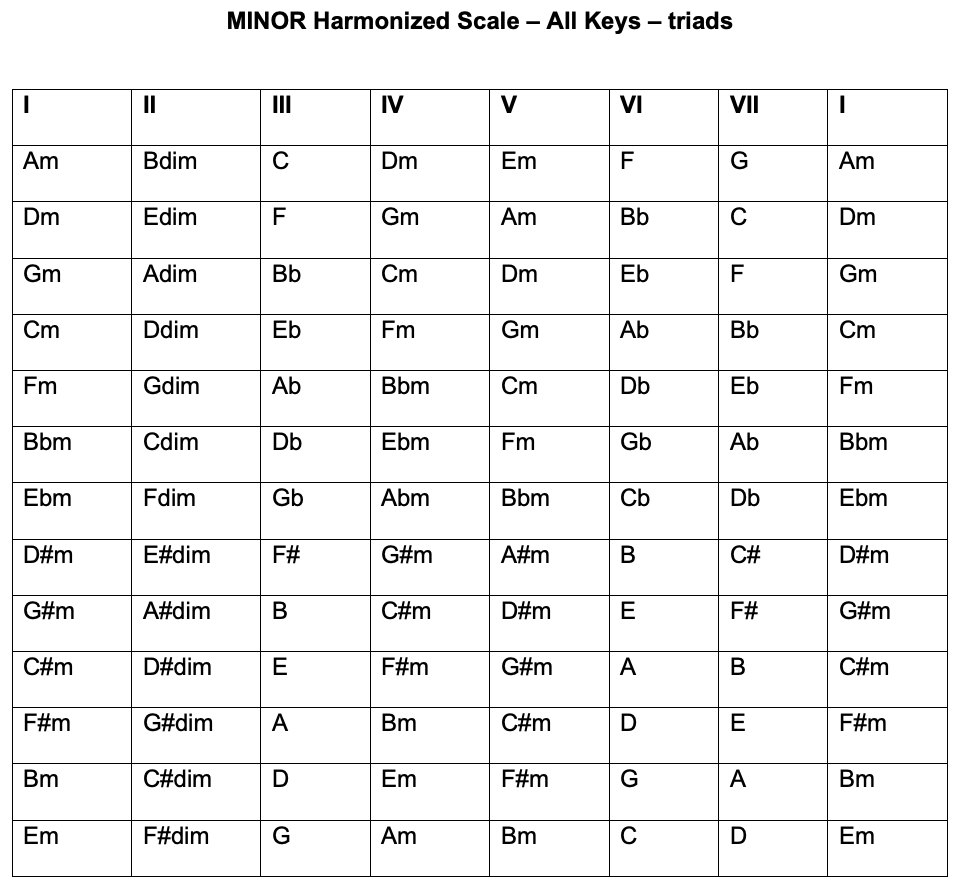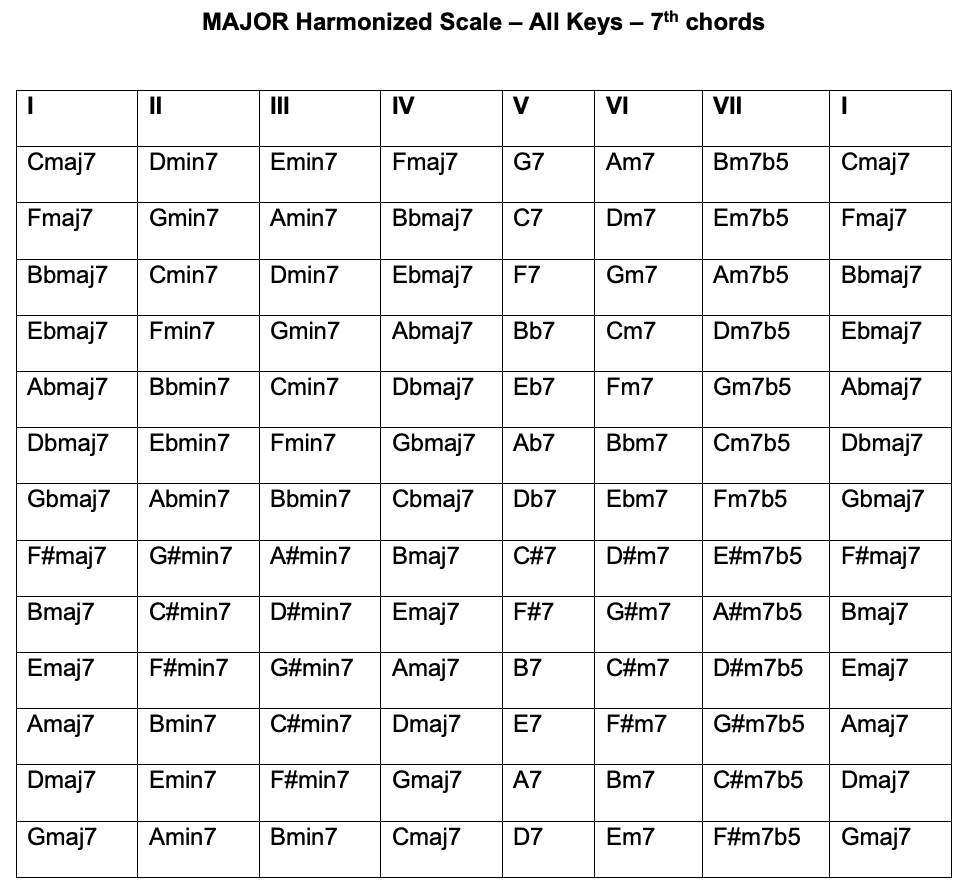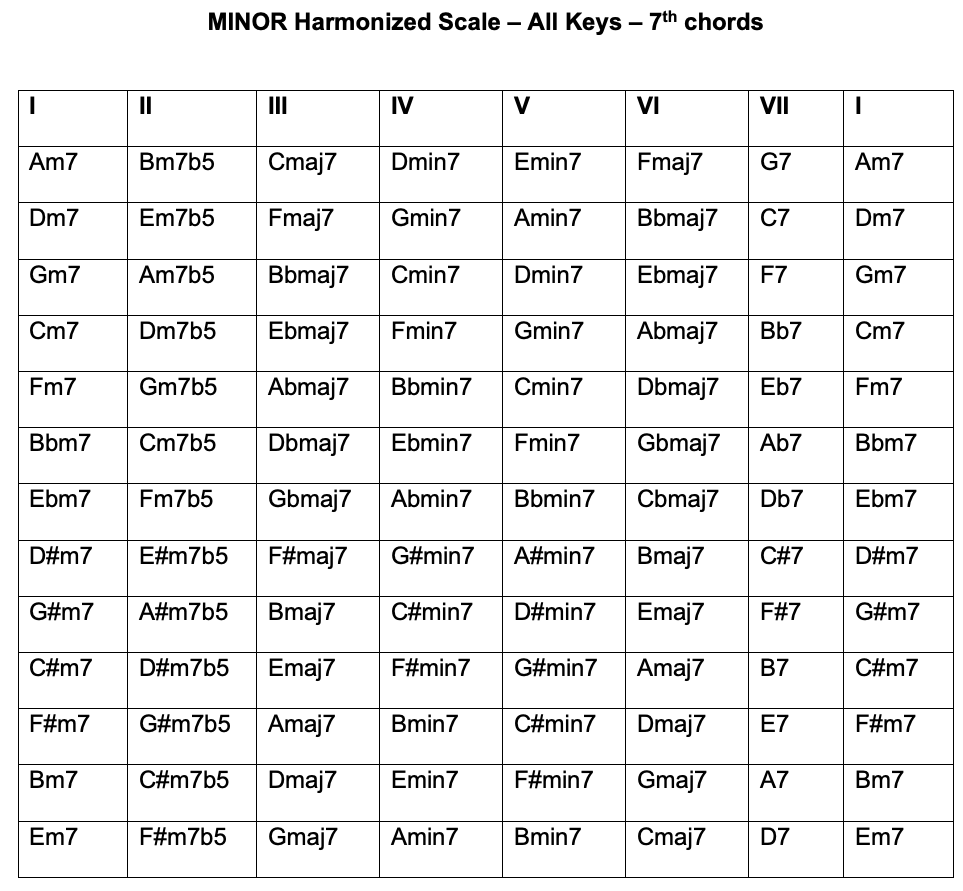by Dennis Winge
The ability to analyze a song is an essential ingredient in being able to improvise over it well. This article assumes you understand how to construct harmonized scales for 12 major and 12 minor keys. For your reference, such charts are attached at the end of this article after all the exercises.
In analyzing tunes, we use the roman numeral system for each chord in the key that the tune is in. In C, I = Cmaj7; II = Dm7; III = Em7 etc. Instead of using the chart as a reference, you should intimately get to them by playing exercises forward and backward such as in examples 1 and 2. Make sure you do them in every key; they might be easy in C, but are they easy for you in B? This will enable you to instantly detect diatonic passages (those pertaining to a particular key) and cadences (ex: II V I) in a new tune you might be working or one that is called at a jam session. It will also be extremely useful if you play I VI II V patterns or II V I VI patterns in 12 keys, as in examples 3 and 4.
When chords are diatonic, they are easily spotted, plus they give you the option to play vertically (i.e. address each chord) or horizontally (i.e. just address the key only and play patterns, scales, fast runs, etc. all within that key with the confidence that they will work over the whole diatonic sequence).
If any chord is non-diatonic, we use the symbols according to example 5. There is also “figured bass” notation for inversions, but that is beyond the scope of the clinic. For more information, go to John Mehegan’s Tonal & Rhythmic Principles.
When analyzing a tune, always take the path of least resistance, i.e. the simplest and most direct way to understand it and remember it. For example, if you are in the key of C but the tune goes | Fm7 | Bb7 | Ebmaj7 | (ex: Green Dolphin Street) it is certainly not incorrect to call it | IVm| bVIIx | bIII maj7 | but you might find it simpler to label it “bIII becomes new I”: II V I). Also sometimes a chord has a dual function so you could analyze two different ways. See example 6 for the bridge to “Satin Doll,” where the 7th bar has “pivot chords” that could belong to the key they’re in, but probably better to call them by where you’re going.
That brings up an important point in analyzing. You always have to look at the chords as to how they serve the function of providing motion. The key words are “function” and “motion.” Sometimes you might even have to start from the last chord and go backwards in order to best analyze it in context.
Examples 7 and 8 are How High the Moon, and All the Things You Are analyzed. Keep on practicing this system with new tunes.
Good luck & have fun.

About the author: Dennis Winge is the head teacher at Guitar Lessons Ithaca, in the Finger Lakes Region of New York State.




